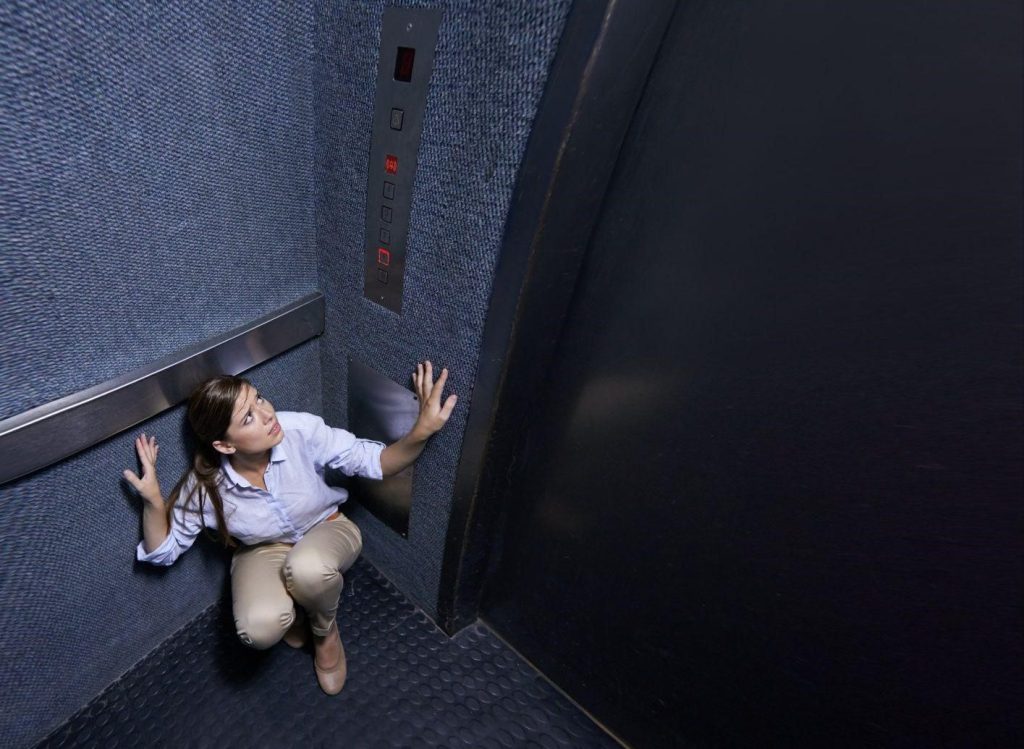CLAUSTROPHOBIA

A phobia is a fear that significantly interferes with a person's ability to live their everyday life. Claustrophobia is a specific phobia in which one fears closed spaces (claustro means closed).
Engine rooms, small or locked rooms, cellars, tunnels, elevators, magnetic resonance imaging machines, subway trains, and crowded places are examples of closed spaces. Those with specific phobias generally report avoidance behaviors regarding the particular object or situation that triggers their fear. The fear can be expressed as a danger of harm, disgust, or physical symptoms in a phobic scenario.
WHAT CAUSES CLAUSTROPHOBIA?
A 2023 study on claustrophobia reveals that individuals with this condition often fear suffocation. This intense fear is perceived as a serious threat by those affected.
Many individuals with claustrophobia often experience a sense of suffocation when they find themselves in enclosed spaces, leading to feelings of shortness of breath. This fear is commonly associated with concerns about potential outcomes while in such areas. Just as agoraphobia is increasingly recognized as a fear of possible scenarios in public settings such as having a panic attack or feeling shame claustrophobia can also be understood in a similar way. Most people with claustrophobia report a subjective feeling of being trapped, as closed spaces typically involve some degree of entrapment and restriction of movement.
SYMPTOMS OF CLAUSTROPHOBIA:
1. Rapid Heartbeat: An elevated heart rate is one of the most typical physical signs of claustrophobia. In cramped areas, the body's fight-or-flight reaction takes over, causing the heart to speed up.
2. Shortness of Breath: Breathing problems or the sensation of being out of breath are common among claustrophobics. This feeling has the potential to intensify anxiety and panic attacks.
3. Sweating & Shaking: Sweating excessively is a typical sign, particularly when one feels confined. Some people may tremble or shake as their tension increases. This bodily response can be upsetting and unpleasant.
4-Severe Fear or Panic: The defining feature of claustrophobia is an intense fear of cramped places, either in person or in thought. The severity of this dread might result in panic episodes, which can cause additional symptoms.
5- Dizziness or Nausea: Claustrophobia can also cause gastrointestinal irritation and nausea. Excessive anxiety or hyperventilation can also cause dizziness.
6- Sense of Detachment: During a panic attack or anxiety episode, people may suffer derealization, which is the feeling that their environment is distorted or unreal.
UNHEALTHY COPING BEHAVIOURS:
1. Avoidance of Confined Spaces: One of the most prevalent behavioural reactions to claustrophobia is to steer clear of potentially anxiety-inducing situations. This could entail avoiding crowded areas, elevators, and flights. A claustrophobic person often escapes from a small area. This may appear as an abrupt panic attack and a last-ditch effort to flee.
2. Restrictions on Daily Activities: A person's way of life may be severely limited by their dread of being in a small area. This could entail staying away from social events, travelling, or jobs that need cramped quarters. People who have claustrophobia may think illogically about what might occur in a small area, such as that they might lose control, faint, or get trapped. These ideas can amplify anxiety and avoidance behaviour.
3. Always Seeking Reassurance: In various circumstances, some people regularly turn to friends or family for reassurance and validation about their safety. This behaviour may develop into a coping strategy to alleviate anxiety, rather than opening up about the mental health concerns and getting a proper diagnosis.
A WORD FROM MENTAL NURTURING:
Claustrophobia is a type of phobia characterized by an intense fear of small or enclosed spaces. For those affected, just the thought of being in a confined area can trigger extreme anxiety and terror. This condition can significantly impact daily life, affecting everything from routine activities like using elevators to more serious situations involving tight spaces. Understanding claustrophobia and its symptoms is essential for recognizing the need for proper support and empathy.
Claustrophobia falls under the category of anxiety disorders. Individuals may experience severe emotional and physical reactions that are disproportionate to the actual danger present in these situations. Research has shown that Cognitive behavioral therapy (CBT) is the most effective type of psychotherapy for all anxiety disorders, including claustrophobia.
Living with claustrophobia can greatly affect a person's daily life and mental well-being. If you or someone you know is struggling with claustrophobia, seeking professional help is a crucial first step in managing the condition. Mindfulness and support can help address the underlying fears and develop healthy coping mechanisms, allowing individuals to live in the present moment and confront challenges that once seemed overwhelming. Recognizing and understanding claustrophobia is the first step toward self-awareness, resilience and breaking the stigma of mental illness.
RESOURCES:
1. Febbraro, G.A.R., Clum, G.A. A dimensional analysis of claustrophobia. J Psychopathol Behav Assess 17, 335–351 (1995). https://doi.org/10.1007/BF02229055
2. Ströhle A, Gensichen J, Domschke K. The Diagnosis and Treatment of Anxiety Disorders. Dtsch Arztebl Int. 2018 Sep 14;155(37):611-620. doi: 10.3238/arztebl.2018.0611. PMID: 30282583; PMCID: PMC6206399.
3. Vadakkan C, Siddiqui W. Claustrophobia. 2023 Feb 8. In: StatPearls [Internet]. Treasure Island (FL): StatPearls Publishing; 2025 Jan–. PMID: 31194467.
4. Rahani VK, Vard A, Najafi M. Claustrophobia Game: Design and Development of a New Virtual Reality Game for Treatment of Claustrophobia. J Med Signals Sens. 2018 Oct-Dec;8(4):231-237. doi: 10.4103/jmss.JMSS_27_18. PMID: 30603615; PMCID: PMC6293643.

Written by:
Hana Noor,
Medically reviewed by:
Dr.Saba Munir, MBBS,
On May 20, 2025

